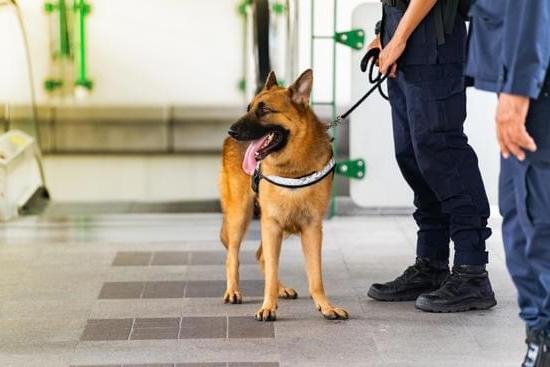Are you wondering how to crate train a dog? Crate training can be an incredibly useful tool for both you and your furry friend. In this article, we will explore the purpose and benefits of crate training, as well as provide a comprehensive guide on how to successfully implement this training method with your dog.
Crate training is not just about confining your dog; it is about providing them with a safe and secure space that they can call their own. When done correctly, crate training can help with housebreaking, preventing destructive behavior, and providing a safe haven for your dog when they need some alone time. Understanding the purpose and benefits of crate training is essential for successfully implementing this technique.
In this comprehensive guide, we will cover everything from selecting the right crate, creating a positive association with the crate, establishing a routine for feeding and bathroom breaks, to using positive reinforcement techniques to encourage crate use. We will also delve into more advanced techniques such as dealing with separation anxiety and gradually transitioning your dog to freedom outside of the crate.
Whether you are starting from scratch or looking to fine-tune your existing crate training methods, this article has got you covered.
Selecting the Right Crate
When it comes to crate training a dog, selecting the right crate is essential for the success of the training process. The size, material, and location of the crate all play a crucial role in ensuring that the dog feels comfortable and secure in their new environment. Here are some tips on how to select the right crate for your dog:
- Size: It’s important to choose a crate that is big enough for your dog to stand up, turn around, and lie down comfortably. However, the crate should not be too big either, as this can defeat the purpose of creating a den-like space for your dog.
Measure your dog from the tip of their nose to the base of their tail, and from their paws to the top of their head to determine the appropriate size. - Material: Crates come in various materials such as plastic, wire, and fabric. Consider your dog’s chewing habits and behavior when choosing a material. If your dog is prone to chewing or escaping, a sturdy wire crate may be more suitable. For travel purposes, a plastic crate may be more convenient.
- Location: The location of the crate is also important in making sure that your dog feels safe and comfortable. Place the crate in an area where your family spends time so that your dog doesn’t feel isolated. Avoid placing the crate near drafty areas or direct sunlight.
By carefully considering these factors when selecting a crate for your dog, you can ensure that they have a positive experience with crate training and feel secure in their new space. This will make it easier for you to move on to other aspects of the training process such as establishing routines and using positive reinforcement techniques.
Creating a Positive Association With the Crate
When it comes to crate training a dog, one of the most crucial steps is creating a positive association with the crate. This helps the dog view the crate as a safe and comfortable space rather than a form of punishment. Here are some tips for introducing your dog to the crate in a positive way:
1. Introduce the crate gradually: Start by placing the crate in an area where your dog spends a lot of time, such as the living room or bedroom. Leave the door open and allow your dog to explore the crate at their own pace. You can also try placing treats or toys inside to encourage them to go inside.
2. Make it comfortable: Add bedding or blankets to make the crate cozy and inviting for your dog. You want them to feel comfortable and at ease when they are inside.
3. Associate with positive experiences: During the initial introduction phase, you can feed your dog their meals inside the crate or give them treats when they go in voluntarily. This creates a positive association with being inside the crate.
Additionally, it’s important not to force your dog into the crate or use it as a form of punishment. This will only create negative associations and make it more difficult to train them to use the crate willingly. By taking these steps, you can help your dog see their crate as a safe and secure place, making it easier for them to adapt to using it regularly.
Establishing a Routine
In addition to feeding, it’s important to schedule regular bathroom breaks while your dog is in the crate. A good rule of thumb is that puppies can hold their bladders for one hour for every month of age, while adult dogs can typically hold it for up to eight hours. Taking your dog outside or to their designated bathroom area on a consistent schedule will help prevent accidents inside the crate and reinforce a sense of routine.
It’s also crucial to incorporate playtime into your dog’s routine while they are in the crate. By providing toys and interactive activities inside the crate, you can keep your dog entertained and engaged during their time in confinement. This will help prevent boredom and restlessness, making it more likely that they will see their crate as a positive place to be.
| Aspect | Details |
|---|---|
| Feeding | Place food bowl at back of crate for positive association |
| Bathroom Breaks | Schedule regular breaks based on age and needs |
| Playtime | Provide toys and activities to prevent boredom |
Positive Reinforcement Techniques
Crate training a dog can be an effective way to provide them with a safe and comfortable space, while also helping with potty training and reducing anxiety. One key aspect of crate training is using positive reinforcement techniques to encourage the dog to see the crate as a place they want to be. This section will discuss how to use treats and praise effectively in crate training.
When introducing your dog to the crate, start by placing some of their favorite treats or toys inside. Allow them to explore the crate at their own pace, and when they enter the crate on their own, be sure to offer plenty of verbal praise and affection. This will help create a positive association with the crate, making it more likely that they will willingly enter on their own in the future.
As your dog becomes more comfortable with the crate, start practicing short periods of time where they are crated with a special treat or chew toy. When you put them in the crate, give them the treat or toy and praise them for going in. This will help reinforce the idea that good things happen when they are in the crate, making it a more inviting space for them.
It’s important to remember that every dog is different and may respond differently to treat-based training. Some dogs may not be very food motivated, so finding other forms of positive reinforcement such as verbal praise or physical affection can also be effective. The key is to make the crate a place that your dog associates with positivity and comfort.
| Positive Reinforcement Techniques | Using Treats and Praise |
|---|---|
| Introduce treats and toys inside the crate | Encourage exploration at their own pace |
| Practice short periods in crate with special treats/chew toys | Praise for going into the crate willingly |
| Adapt positive reinforcement based on individual dog’s preferences | Verbal praise and physical affection can also be effective |
Dealing With Separation Anxiety
Understanding Separation Anxiety in Dogs
Separation anxiety is a common issue for dogs, especially when they are being crate trained. This anxiety can manifest in various ways, such as excessive barking, whining, destructive behavior, and attempts to escape the crate. It’s important to understand that your dog’s behavior is not out of spite or disobedience but rather a response to feeling anxious and stressed when left alone.
Creating a Safe and Comfortable Environment
To help your dog feel more secure in the crate, it’s essential to create a safe and comfortable environment. Make sure the crate is adequately padded with a comfortable blanket or bed. You can also add some of your dog’s favorite toys or items with your scent to provide familiarity and comfort. Additionally, consider covering the crate with a blanket to create a den-like atmosphere, which can help reduce anxiety.
Gradual Desensitization and Positive Reinforcement
When dealing with separation anxiety during crate training, it’s crucial to implement gradual desensitization techniques. Start by leaving your dog in the crate for short periods while you are still at home. Gradually increase the duration as your dog becomes more comfortable with being inside the crate.
Pair this process with positive reinforcement techniques such as treats, praise, and comforting words to create a positive association with the crate. Over time, your dog will start to feel more secure and calm when inside the crate, even when left alone for longer periods.
By implementing these strategies and techniques for dealing with separation anxiety during crate training, you can help your dog feel secure and comfortable in their crate. Remember that patience and consistency are key when addressing separation anxiety, and providing a safe and comforting environment will ultimately lead to successful crate training for your furry companion.
Common Challenges and Solutions
Crate training a dog can be a highly effective way to provide your pet with a safe and comfortable space, as well as to help with behavior training and housebreaking. However, it’s not uncommon for dog owners to encounter challenges when crate training their pets. Whining, barking, and escape attempts are some of the common issues that may arise during the crate training process.
Whining and Barking
Dogs may often whine or bark when first introduced to the crate, especially if they are not used to being confined. This behavior can be distressing for both the dog and the owner. To address this issue, it’s essential to remain patient and avoid giving in to the dog’s demands by releasing them from the crate while they are exhibiting this behavior. Doing so will only reinforce their whining and barking.
Instead, try placing the dog in the crate with a favorite toy or treat to distract them. It’s also crucial for you, as an owner, to remain calm and avoid showing any anxiety or frustration when your dog is exhibiting this behavior. Over time, most dogs will learn to associate their crate with comfort and security, reducing their need to whine or bark.
Escape Attempts
Some dogs may attempt to escape from their crates, especially if they feel anxious or confined. To address this issue, ensure that you have selected an appropriately sized crate for your dog-too small of a crate may make your pet feel cramped and uncomfortable, leading them to attempt an escape.
Additionally, make sure that the crate is properly secured and cannot be easily knocked over or opened by your pet. Providing positive reinforcement when your dog remains calm in their crate can also help reduce their desire to escape. Remember that patience is key when addressing escape attempts; with consistent training and positive reinforcement techniques, most dogs will learn to feel comfortable in their crates without attempting an escape.
By understanding these common challenges associated with crate training-a fundamental aspect of how to train a dog-you will be better equipped to address them effectively and ensure a successful training experience for both you and your beloved pet.
Gradual Transition to Freedom
After successfully introducing your dog to the crate and establishing a positive association with it, the next step in crate training is to gradually increase the dog’s time out of the crate. This is an important part of the process as it helps the dog transition from being confined to having more freedom while ensuring that they still feel secure and comfortable.
To start this gradual transition, begin by allowing your dog short periods of supervised time outside the crate. This could be during playtime or when you are able to closely monitor their behavior. It’s important to observe how your dog behaves during these initial periods of freedom and reinforce positive behavior with treats and praise.
As your dog becomes more accustomed to being outside the crate, gradually increase the duration of their free time. You can do this by extending their playtime or allowing them to roam around a designated area under supervision. Be mindful of any signs of anxiety or stress, and if necessary, reduce the time before trying again.
It’s essential to remember that every dog is different, so patience is key when transitioning them to more freedom. Some dogs may take longer than others to adjust, but with consistency and positive reinforcement, they will eventually become comfortable being outside the crate for longer periods of time. By following this gradual transition process, you will help your dog develop confidence and independence while still feeling secure in their home environment.
Advanced Crate Training Techniques
In conclusion, crate training a dog can be a beneficial and effective way to provide security and comfort for your pet. By following the steps outlined in this article, you can establish a positive association with the crate, create a routine, and use positive reinforcement techniques to encourage your dog to use the crate. Moreover, addressing common challenges such as separation anxiety and gradually transitioning to freedom will help make the process smoother for both you and your pet.
As you progress with crate training, it’s important to consider advanced techniques for extending the training to different situations, such as car rides and traveling with your dog. By slowly introducing your dog to the crate in the car and taking short trips at first, you can help them feel comfortable and secure during travel. It’s essential to remain patient and consistent throughout this process, using treats and praise to reinforce positive behavior.
Overall, crate training a dog requires time, patience, and consistency. Remember that every dog is unique, so it’s important to tailor the training approach to suit their individual needs. Whether you’re introducing a new puppy to crate training or helping an older dog adjust, following these guidelines will set you on the right path towards successfully crate training your beloved pet.
Frequently Asked Questions
How Long Does It Take to Crate Train a Dog?
The duration of crate training for a dog can vary depending on the individual dog and their temperament. On average, it can take anywhere from a few days to a few weeks for a dog to become comfortable with their crate.
Is Crate Training Stressful for Dogs?
Crate training can be stressful for dogs if not done properly. It is important to introduce the crate gradually and create positive associations with it through treats, toys, and praise. Making the crate a comfortable and safe space for the dog is key in minimizing stress.
How Do I Get My Puppy to Stop Whining in His Crate?
To help your puppy stop whining in his crate, start by ensuring that all his needs are met before crating him – this means feeding, watering, exercising, and bathroom breaks. Additionally, provide comforting items such as a blanket or a toy, and consider placing the crate near you at night so your presence can reassure the puppy.
Gradually increasing the time spent in the crate can also help reduce whining as the puppy gets more accustomed to it.

Welcome to the blog! I am a professional dog trainer and have been working with dogs for many years. In this blog, I will be discussing various topics related to dog training, including tips, tricks, and advice. I hope you find this information helpful and informative. Thanks for reading!





